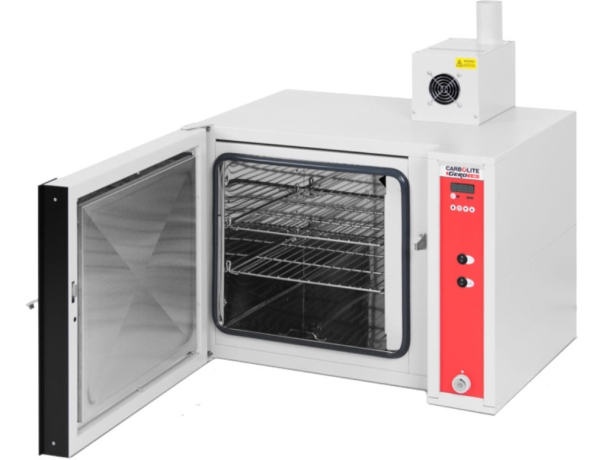There are many types of furnaces/ovens for laboratories and industry. The right choice of stoves should be according to the maximum temperature, with which you need to work.
Furnaces & Drying ovens
- Drying ovens are usually designed for up to 300 degrees Celsius and the inner chamber is made of stainless steel and the heat transfer in a natural flow of air or by a blower.
-Furnaces are suitable for 500 degrees and up to 1800 degrees. Heat transfer in radiation.
Drying ovens
Drying ovens suitable for up to 300 degrees. Its purpose is to heat, dry, harden, sterilize materials and parts.In the process of drying materials, fresh air enters through the heating elements and moist air exits.The blower produces temperature uniformity inside the oven by dissipating the hot air.
Drying ovens are designed for:
-Drying materials.
Extraction of large amounts of water: expensive drying, egg, etc.
-Drying and hardening in coating and casting processes.
-Drying and sterilization of dishes
-Heating and relaxation of parts in assembly processes.
- Sterilization of tools and parts.
-Flashing processes for parts.
-Heating test of electronic or medical products pitcher test them under the influence of heat.
- The difficulty

Furnaces
Laboratory Furnaces can reach up to 1800 degrees. The Furnace heat transfer is in radiation. Therefore Furnace is not suitable for work at low temperatures up to 300-400 Celsius, at these temperatures the heating element is not yet radiant.
Various uses of Furnace can be found in the industry. It provides continuous heating for processing samples and materials. When choosing Laboratory Furnaces, take into account: process temperatures and whether a programmer is needed to create a temperature profile.
Laboratory Furnaces are designed for:
-Treatments in metals, ceramics, glass
- Thermal treatments- Burning of organic and plastic materials.

Carbolite manufactures furnaces of the highest standard